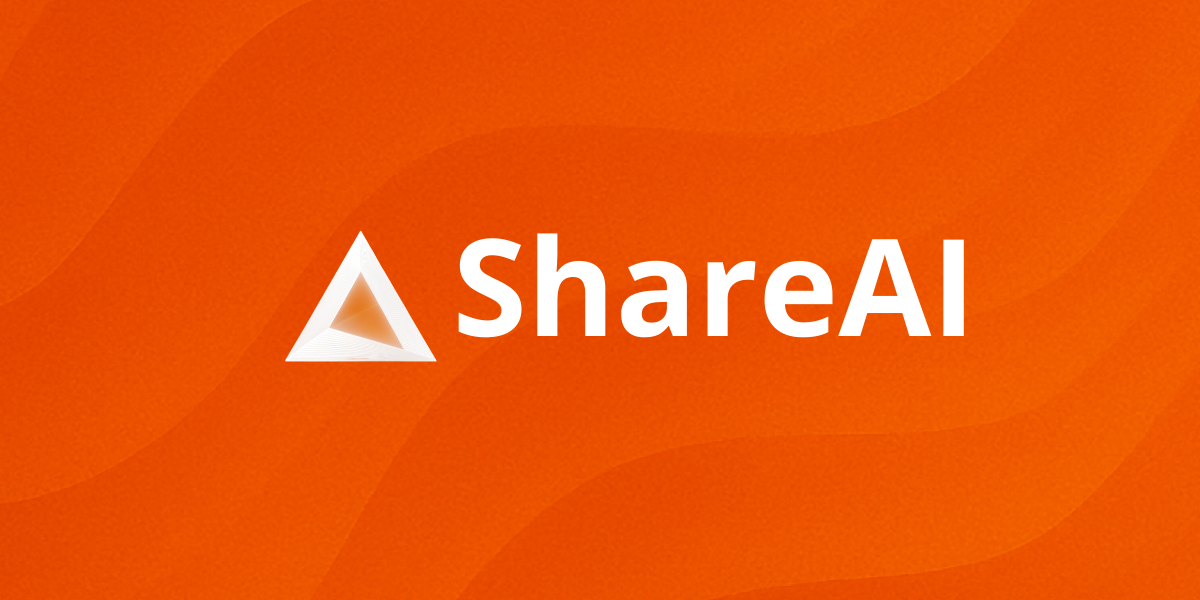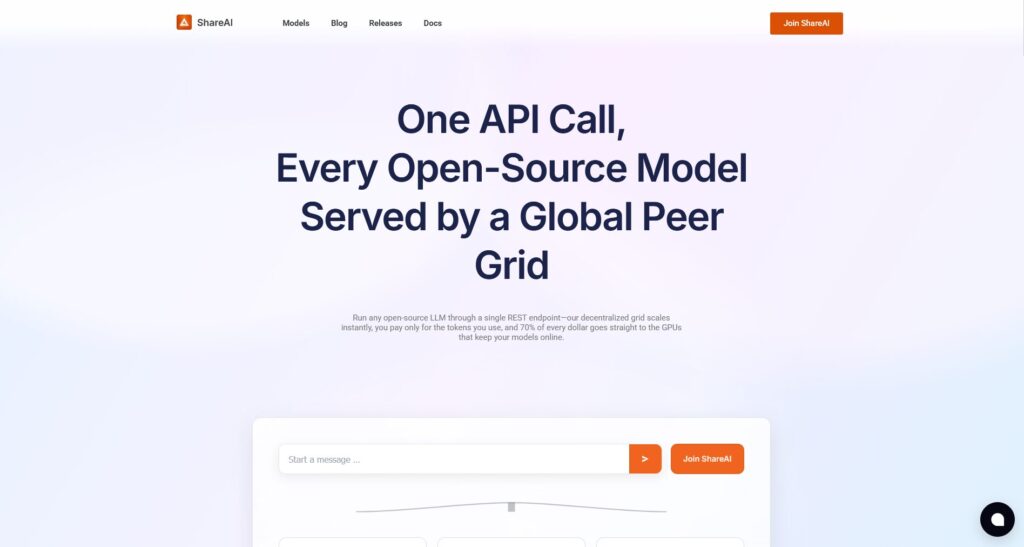Why Should You Use an LLM Gateway?

Teams are shipping AI features across multiple model providers. Each API brings its own SDKs, parameters, rate limits, pricing, and reliability quirks. That complexity slows you down and increases risk.
An LLM gateway gives you one access layer to connect, route, observe, and govern requests across many models—without constant reintegration work. This guide explains what an LLM gateway is, why it matters, and how ShareAI provides a model-aware gateway you can start using today.
What Is an LLM Gateway?
Short definition: an LLM gateway is a middleware layer between your app and many LLM providers. Instead of integrating every API separately, your app calls a single endpoint. The gateway handles routing, standardization, observability, security/key management, and failover when a provider fails.
LLM Gateway vs. API Gateway vs. Reverse Proxy
API gateways and reverse proxies focus on transport concerns: auth, rate limiting, request shaping, retries, headers, and caching. An LLM gateway adds model-aware logic: token accounting, prompt/response normalization, policy-based model selection (cheapest/fastest/reliable), semantic fallback, streaming/tool-call compatibility, and per-model telemetry (latency p50/p95, error classes, cost per 1K tokens).
Think of it as a reverse proxy specialized for AI models—aware of prompts, tokens, streaming, and provider quirks.
Core Building Blocks
Provider adapters & model registry: one schema for prompts/responses across vendors.
Routing policies: choose models by price, latency, region, SLO, or compliance needs.
Health & failover: rate-limit smoothing, backoff, circuit breakers, and automatic fallback.
Observability: request tags, p50/p95 latency, success/error rates, cost per route/provider.
Security & key management: rotate keys centrally; use scopes/RBAC; keep secrets out of app code.
The Challenges Without an LLM Gateway
Integration overhead: every provider means new SDKs, parameters, and breaking changes.
Inconsistent performance: latency spikes, regional variance, throttling, and outages.
Cost opacity: hard to compare token prices/features and track $ per request.
Operational toil: DIY retries/backoff, caching, circuit-breaking, idempotency, and logging.
Visibility gaps: no single place for usage, latency percentiles, or failure taxonomies.
Vendor lock-in: rewrites slow experimentation and multi-model strategies.
How an LLM Gateway Solves These Problems
Unified access layer: one endpoint for all providers and models—swap or add models without rewrites.
Smart routing & automatic fallback: reroute when a model is overloaded or fails, per your policy.
Cost & performance optimization: route by cheapest, fastest, or reliability-first—per feature, user, or region.
Centralized monitoring & analytics: track p50/p95, timeouts, error classes, and cost per 1K tokens in one place.
Simplified security & keys: rotate and scope centrally; remove secrets from app repos.
Compliance & data locality: route within EU/US or per tenant; tune logs/retention; apply safety policies globally.
Example Use Cases
Customer support copilots: meet strict p95 targets with regional routing and instant failover.
Content generation at scale: batch workloads to the best price-performance model at run time.
Search & RAG pipelines: mix vendor LLMs with open-source checkpoints behind one schema.
Evaluation & benchmarking: A/B models using the same prompts and tracing for apples-to-apples results.
Enterprise platform teams: central guardrails, quotas, and unified analytics across business units.
How ShareAI Works as an LLM Gateway

One API to 150+ models: compare and choose in the Model Marketplace.
Policy-driven routing: price, latency, reliability, region, and compliance policies per feature.
Instant failover & rate-limit smoothing: backoff, retries, and circuit breakers built in.
Cost controls & alerts: per-team/project caps; spend insights and forecasts.
Unified monitoring: usage, p50/p95, error classes, success rates—attributed by model/provider.
Key management & scopes: bring your own provider keys or centralize them; rotate and scope access.
Works with vendor + open-source models: swap without rewrites; keep your prompt and schema stable.
Start fast: explore the Playground, read the Docs, and the API Reference. Create or rotate your key in Console. Check what’s new in Releases.
Quick Start (Code)
JavaScript (fetch)
/* 1) Set your key (store it securely - not in client code) */
const SHAREAI_API_KEY = process.env.SHAREAI_API_KEY;
/* 2) Send a prompt to your chosen model (or alias/policy) */
async function askShareAI(prompt) {
const res = await fetch("https://api.shareai.now/v1/chat/completions", {
method: "POST",
headers: {
"Authorization": `Bearer ${SHAREAI_API_KEY}`,
"Content-Type": "application/json",
},
body: JSON.stringify({
model: "MODEL_ID_OR_ALIAS",
messages: [{ role: "user", content: prompt }],
stream: true,
}),
});
if (!res.ok) {
throw new Error(`HTTP ${res.status}`);
}
return await res.json();
}
/* Example */
askShareAI("Summarize our changelog into 3 bullets.")
.then(console.log)
.catch(console.error);Python (requests)
import os
import requests
API_KEY = os.environ["SHAREAI_API_KEY"]
URL = "https://api.shareai.now/v1/chat/completions"
payload = {
"model": "MODEL_ID_OR_ALIAS",
"messages": [
{
"role": "user",
"content": "Write a product update in 120 words."
}
],
"stream": False
}
resp = requests.post(
URL,
json=payload,
headers={"Authorization": f"Bearer {API_KEY}"},
timeout=60
)
resp.raise_for_status()
print(resp.json())Browse available models and aliases in the Model Marketplace. Create or rotate your key in Console. Read the full parameters in the API Reference.
Best Practices for Teams
Separate prompts from routing: keep prompts/templates versioned; switch models via policies/aliases.
Tag everything: feature, cohort, region—so you can slice analytics and cost.
Start with synthetic evals; verify with shadow traffic before full rollout.
Define SLOs per feature: track p95 rather than averages; watch success rate and $ per 1K tokens.
Guardrails: centralize safety filters, PII handling, and region routing in the gateway—never re-implement per service.
FAQ: Why Use an LLM Gateway? (Long-Tail)
What is an LLM gateway? An LLM-aware middleware that standardizes prompts/responses, routes across providers, and gives you observability, cost controls, and failover in one place.
LLM gateway vs API gateway vs reverse proxy—what’s the difference? API gateways/reverse proxies handle transport concerns; LLM gateways add model-aware functions (token accounting, cost/perf policies, semantic fallback, per-model telemetry).
How does multi-provider LLM routing work? Define policies (cheapest/fastest/reliable/compliant). The gateway selects a matching model and reroutes automatically on failures or rate limits.
Can an LLM gateway reduce my LLM costs? Yes—by routing to cheaper models for suitable tasks, enabling batching/caching where safe, and surfacing cost per request and $ per 1K tokens.
How do gateways handle failover and auto-fallback? Health checks and error taxonomies trigger retry/backoff and a hop to a backup model that meets your policy.
How do I avoid vendor lock-in? Keep prompts and schemas stable at the gateway; swap providers without code rewrites.
How do I monitor p50/p95 latency across providers? Use the gateway’s observability to compare p50/p95, success rates, and throttling by model/region.
What’s the best way to compare providers on price and quality? Start with staging benchmarks, then confirm with production telemetry (cost per 1K tokens, p95, error rate). Explore options in Models.
How do I track cost per request and per user/feature? Tag requests (feature, user cohort) and export cost/usage data from the gateway’s analytics.
How does key management work for multiple providers? Use central key storage and rotation; assign scopes per team/project. Create/rotate keys in Console.
Can I enforce data locality or EU/US routing? Yes—use regional policies to keep data flows in a geography and tune logging/retention for compliance.
Does this work with RAG pipelines? Absolutely—standardize prompts and route generation separately from your retrieval stack.
Can I use open-source and proprietary models behind one API? Yes—mix vendor APIs and OSS checkpoints via the same schema and policies.
How do I set routing policies (cheapest, fastest, reliability-first)? Define policy presets and attach them to features/endpoints; adjust per environment or cohort.
What happens when a provider rate-limits me? The gateway smooths requests and fails over to a backup model if needed.
Can I A/B test prompts and models? Yes—route traffic fractions by model/prompt version and compare outcomes with unified telemetry.
Does the gateway support streaming and tools/functions? Modern gateways support SSE streaming and model-specific tool/function calls via a unified schema—see the API Reference.
How do I migrate from a single-provider SDK? Isolate your prompt layer; swap SDK calls for the gateway client/HTTP; map provider params to the gateway schema.
Which metrics should I watch in production? Success rate, p95 latency, throttling, and $ per 1K tokens—tagged by feature and region.
Is caching worth it for LLMs? For deterministic or short prompts, yes. For dynamic/tool-heavy flows, consider semantic caching and careful invalidation.
How do gateways help with guardrails and moderation? Centralize safety filters and policy enforcement so every feature benefits consistently.
How does this affect throughput for batch jobs? Gateways can parallelize and rate-limit intelligently, maximizing throughput within provider limits.
Any downsides to using an LLM gateway? Another hop adds small overhead, offset by fewer outages, faster shipping, and cost control. For ultra-low-latency on a single provider, a direct path may be marginally faster—but you lose multi-provider resilience and visibility.
Conclusion
Relying on a single LLM provider is risky and inefficient at scale. An LLM gateway centralizes model access, routing, and observability—so you gain reliability, visibility, and cost control without rewrites. With ShareAI, you get one API to 150+ models, policy-based routing, and instant failover—so your team can ship confidently, measure outcomes, and keep costs in check.
Explore models in the Marketplace, try prompts in the Playground, read the Docs, and check Releases.
